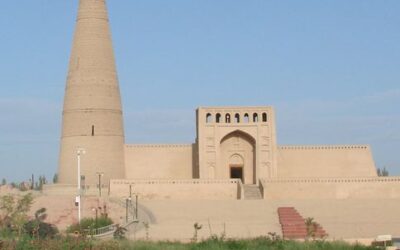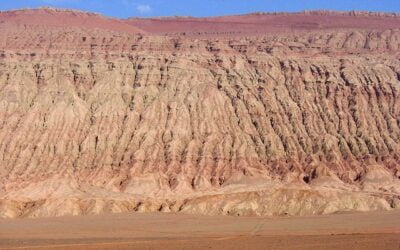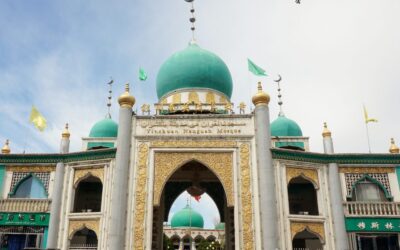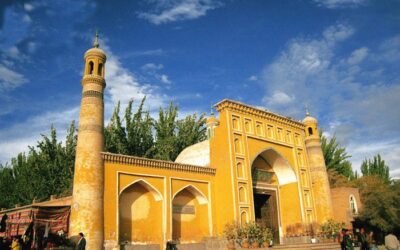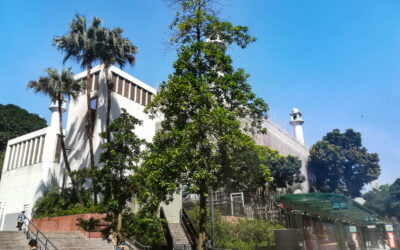Great Mosque of Xi’an
- The Great Mosque of Xi’an is one of the largest premodern Musjids in China. Although the Musjid was first built in the year 742 AD during the Tang dynasty, its current form was largely constructed in 1384 AD during Emperor Hongwu’s reign of the Ming dynasty, as recorded by the Records of Xi’an Municipality.
- Chang’an, as the cosmopolitan capital of China’s Tang dynasty, had sizable non-Han merchant and artisan communities that resided there. Many of them migrated to China from today’s West Asia. Emperor Xuanzong decreed around the year 742 AD that a place of worship for the Muslim community was to be constructed in the city. It has been argued that, around the same time, Musjids for the immigrant population in Quanzhou and Guangzhou were being built. There is evidence that the early Musjid was used during the Song dynasty due to the presence of an imperial plaque placed in the Musjid issued by the Song government.
- Due to the collapse of the Tang dynasty and later the Song dynasty, most parts of the original Musjid constructed in the Tang dynasty did not survive. The Musjid was reconstructed at least four times before taking its modern shape. At around the 1260s, the then deteriorating Musjid was rebuilt by the Yuan government as Huihui Wanshansi.
- The city of Xi’an, after being destroyed during the collapse of the Tang dynasty, was reconstructed during the Ming dynasty by 1378 AD. The reconstruction of the original Musjid into its contemporary form was patronized by the imperial government during Emperor Hongwu’s reign. The Musjid witnessed further additions during the Qing dynasty, which included the Musjid’s front gate, Paifang, and Sebil. Evidence of official patronage of the Musjid is present in the form of plaques placed in the Musjid. For instance, a plaque stating the Declaration of the Reconstruction of the Musjid was placed there in 1606 during the Ming dynasty. Another plaque called Declaration to Fix the Musjid was placed there by the Qing government in 1768.
- In 1956, the government of the People’s Republic of China declared the Musjid to be a Historical and Cultural Site Protected at the Shaanxi Province Level. However, during the Cultural Revolution, as with practically all other religious facilities in mainland China, the Musjid was temporarily shut down and converted into a steel factory. Following Mao Zedong’s death in 1976, religious activities resumed, and the Musjid was later promoted to a Major Historical and Cultural Site Protected at the National Level in 1988. In 1997, it was selected as one of the top 10 tourist attractions in Xi’an.
- Today, the Musjid is used as a place of worship by Chinese Muslims, primarily the Hui people. The Great Mosque of Xi’an represents the Gedimu tradition of Sunni Islam with the Hanafi jurisdiction, which is the majority jurisprudence that the Hui population follow. The main prayer hall of the Great Mosque of Xi’an can accommodate 1,000 people though around 100 worshippers attend a typical Friday service today. Visitors and tourists can pay a small fee to enter and complex and see the gardens and steles but non-Muslim are not allowed to enter the prayer hall.
- The Musjid standing today is not only a religious site to the Muslims in the city, but a cultural heritage site to all citizens of Xi’an. It is used to represent the ethnic and religious diversity that the city had in the past.

